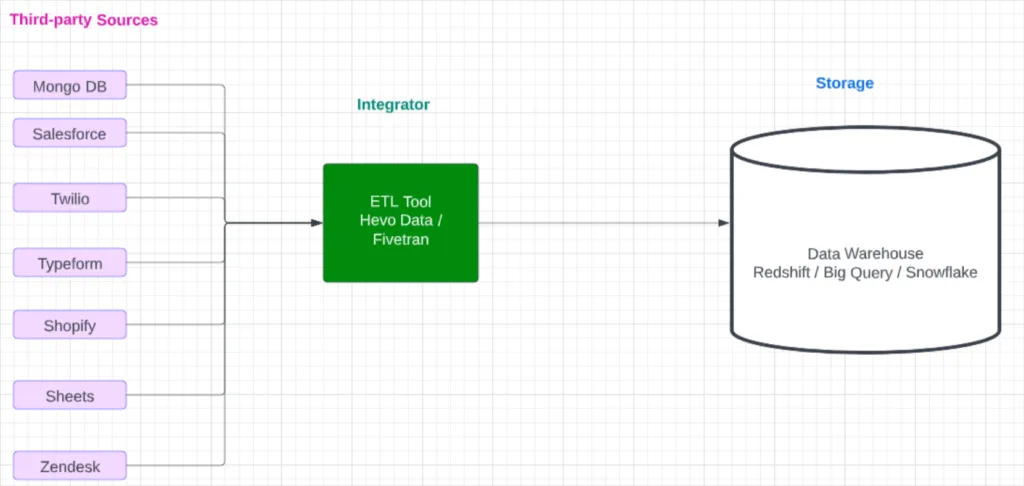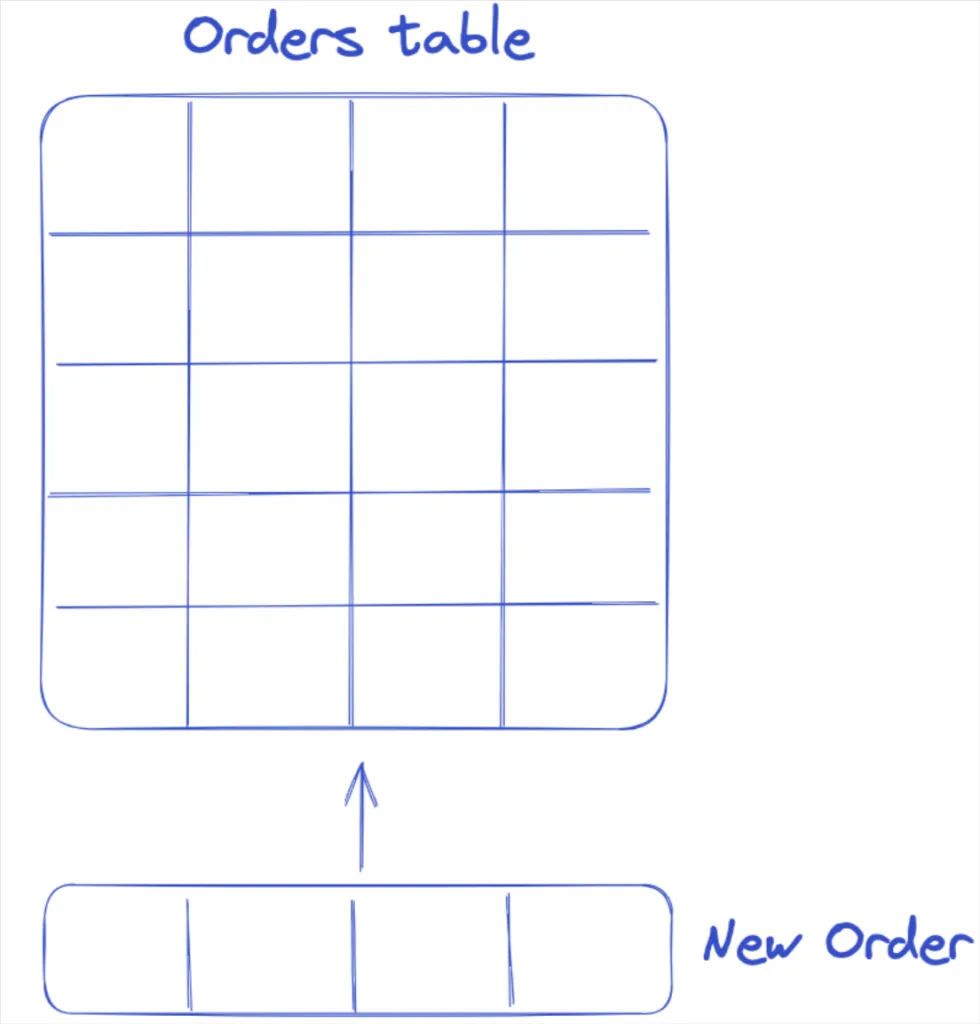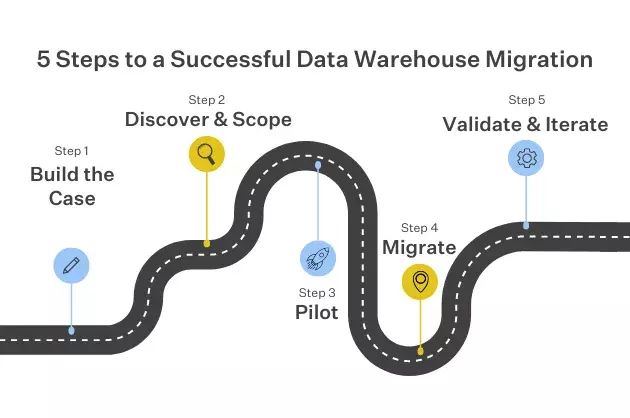Data Warehousing Guide: Fundamentals & Key Concepts

Since the inception of the cloud, there has been a massive push to store any and all data. On the surface, the promise of scaling storage and processing is readily available for databases hosted on AWS RDS, GCP cloud SQL and Azure to handle these new workloads.
The problem is that these databases belong to the OLTP (online transaction processing) category of databases, which are not built to handle billions of rows and take anywhere from 30 minutes to a few hours to return the resultset for one SQL query. The cost of running these queries is very high due to the lack of query optimization.
Cloud data warehouses solve these problems. Belonging to the category of OLAP (online analytical processing) databases, popular data warehouses like Snowflake, Redshift and Big Query can query one billion rows in less than a minute.
And that ability to cost-effectively reach hyperscale is why these solutions are some of the fastest growing in the world. Data analysts and engineers can run the queries they want to run when they want to run them without worrying about excessive load times or statement timeouts.
This article will define in simple terms what a data warehouse is, how it’s different from a database, fundamentals of how they work, and an overview of today’s most popular data warehouses.
What is a data warehouse?
A data warehouse is an online analytical processing system that stores vast amounts of data collected within a company’s ecosystem and acts as a single source of truth to enable downstream data consumers to perform business intelligence tasks, machine learning modeling, and more.
What’s the difference between a transactional database and a data warehouse?
It’s possible to use a database meant for OLTP as a data warehouse, but as your data grows and the queries become more complex, operations start to slow down, ultimately resulting in deadlocks and missed data.
The distinction we’re making here are tools, such as PostgreSQL that can be used as transactional databases, versus BigQuery, a data warehouse. A data warehouse tool should be optimized for analytical queries, with features such as columnar storage, that make it much faster to process common ad-hoc questions.
Let’s imagine a scenario where you’re collecting orders information. A transactional database would insert every new order as a new row, so you can imagine a row-based storage would fit this type of process.

If we imagine then analyzing one column, such as total order price, we’d want to add up the order prices across one column, making a columnar store data warehouse much more suitable for running that example analytical query.
Fundamentals of Data Warehouses
Three types of common data transformations within adata warehouse are:
- Integration – It acts as an endpoint for data from various sources such as APIs and databases
- Cleaning – Data from various sources then gets cleaned prior to consolidation to ensure data reliability
- Consolidation – Clean data from various sources then get combined and distilled to extract valuable information
Integration
A data warehouse comes to life when massive troves of data get ingested into it. In order to ingest a huge volume of data, a data warehouse needs to be tightly integrated with all popular third-party data-generating tools. Most data warehouses either have native connectors with third-party tools or rely on ETL players to extract data from these sources and insert them into the data warehouse.
The following diagram explains how integrations work.

A company’s production data, third-party ads data, click stream data, CRM data, and other data are hosted on various systems.
An ETL tool or API-based batch processing/streaming is used to pump all of this data into a data warehouse. Once all of the siloed data is cleaned and consolidated inside a data warehouse, insights can be derived from them.
Cleaning
Bad data can derail an entire company, and the foundation of bad data is unclean data. Therefore it’s of immense importance that the data that enters a data warehouse needs to be cleaned.
Generally, raw data can be unclean and enter into the data warehouse, but once inside data engineers can run data quality checks using DISTINCT, ROW_NUMBER(), etc. keywords. The IS NULL keyword is used to check for missing values. The MIN() and MAX() functions are used to check the range of values. If there are any outliers they are replaced with the appropriate value. More commonly, data engineers will build unit tests within the pipeline itself, for example using the Airflow ShortCircuitOperator to prevent bad data from landing in the warehouse.
There are a few challenges with this approach. First, it is impossible to build tests for all the ways data can break let alone scale those tests across all of your constantly evolving pipelines. Second, to reduce your time-to-detection you need to be end-to-end across your entire data system which may include warehouses or lakes from other vendors or other components of the modern data stack. Finally, where and how the data pipeline broke isn’t always obvious.
Monte Carlo solves these problems with our our data observability platform that uses machine learning to help detect, resolve and prevent bad data.
Consolidation
The main goal of ingesting data into a data warehouse is to perform SQL or Python-based analysis using business intelligence tools/notebooks or to prepare the data for downstream machine learning models. In both of these cases, the data needs to be consolidated.
Given that a data warehouse stores data from multiple sources, SQL queries are written to consolidate data from the multiple sources. Transformation tools like dbt are also very popular low-code, no-code alternatives to build data models and consolidate data so that it is ready to be consumed.
For example, during the consolidation process:
- clickstream data is combined with financial data to gauge the spending of users versus interaction with the app
- Product analytics data is combined with ads data to gauge the retention of users
Masking of personally identifiable information and transformation of data is done during the consolidation process as well.
Key Functions of a Data Warehouse
Any data warehouse should be able to load data, transform data, and secure data.
Data Loading
This is one of the key functions of any data warehouse. Data can be loaded using a loading wizard, cloud storage like S3, programmatically via REST API, third-party integrators like Hevo, Fivetran, etc. Data can be loaded in batches or can be streamed in near real-time. Structured, semi-structured, and unstructured data can be loaded.
Can a data warehouse store unstructured data?
Yes, data warehouses can store unstructured data as a blob datatype. Later this blob can be used for analysis, text mining, natural language processing, etc.
Data Transformation
Raw data ingested into a data warehouse may not be suitable for analysis. They need to be transformed. Data engineers use SQL, or tools like dbt, to transform data within the data warehouse.
Data Security
Data Warehouses achieve security in multiple ways. For example, some data warehouses:
- Can only be accessed using a private cloud.
- Can only be accessed using a specific machine or location.
- Can only be accessed during a certain time of the day
- Can only be accessed using multi-factor authentication.
Access to a data warehouse does not guarantee access to all of its databases, schema, tables, or views.
Every user is tied to a role and every role only has needs-based access. Sometimes access can go as granular as column level masking.
Today’s Most Popular Data Warehouse Solutions
Today’s most popular data warehouses are Snowflake, AWS Redshift, Google BigQuery, and Azure Synapse Analytics.
Snowflake
Snowflake was the first company to split compute and storage inside a data warehouse. Snowflake is the pioneer in cloud data warehousing. They have a marketplace where third-party data can be bought and leveraged for a variety of use cases. They recently announced Snowflake Data Sharing, a critical new methodology where one users can share data with another entity similar to sharing a file. [Read: How To Migrate To Snowflake Like A Boss]
AWS Redshift
Redshift is the official data warehouse of Amazon cloud services. Since Redshift belongs to the AWS ecosystem it is easy to move data from AWS RDS, S3 bucket, etc into Redshift. Redshift offers a serverless tier where one can forget about infrastructure management.
Azure Synapse
Azure Synapse studio is powered by Microsoft and comes with a lot of features like Ingest, Explore, Analyze, and Visualize. It also natively integrates with Apache Spark. It has its own notebooks, dataflow integrations, and spark job definitions.
Google BigQuery
BigQuery is famous for giving users access to public health datasets and geospatial data. It has connectors to retrieve data from Google Analytics and all other Google platforms. It natively powers Google Data Studio and supports operationalizing machine learning models that can be exported for downstream analysis. They recently enabled cloud Pub/Sub to write directly into BigQuery making data streaming a simpler and less time consuming endeavor.
No matter which you choose, all modern data warehouses:
- Are encrypted at rest
- Separate storage from compute
- Can auto-scale up based on need and scale down after the tasks are completed
- Have tightly knight integrations with popular third-party tools like Salesforce, Stripe, etc.
- Store data in a columnar format for faster query processing
- Can query semi-structured data
Summary – Data Warehouses Cheat Sheet
Prefer to learn in bullet point form? Here’s our cheat sheet with everything you need to know about data warehouses.
Fundamentals
- All popular data warehouses use SQL as their primary querying language.
- Every data warehouse is different therefore their SQL flavors are also different
- For instance, Snowflake has the median & ratio_to_report functions which are not available in other data warehouses.
- All popular modern data warehouses run on the cloud
- This means there is no need to install and deploy any kind of hardware
- Maintenance is taken care of by providers themselves
- Data warehouses are split into a few layers
- Storage
- Processing
- Infrastructure management
- One can connect to data warehouses using
- Web clients
- Command line
- BI tools like Tableau & Mode analytics
- Programmatic languages like Python
- Third-party ETL connectors like Hevo
Key Concepts
Following are some of the key concepts of data warehousing.
- Hosted & self-managed on the cloud
- There is no need to provision hardware or software.
- There is no need to update or maintain modern data warehouses
- Data warehouse providers take care of it
- Based on need, the hardware can be changed by clicking a few buttons
- Performance at scale
- Data warehouses are built to query billions of rows (structured & semi-structured)
- Data can be streamed in and out of warehouses multiple times within one second
- More than 15,000 rows can be inserted in one go
- Usage-based pricing
- Pay only when you query, load, or unload.
- Pay only for the resources used at that point in time
- Central repository (Single source of truth)
- Data from multiple sources are migrated into data warehouses
- They are cleaned, transformed, and aggregated to derive insights
- Business Intelligence tools like Sisense data and Tableau are plugged on top of aggregated data
- Aggregated data are also fed into machine learning models
- Highly secure
- Data warehouses are often HIPPA and GDPR compliant
- Data can be masked as needed
- Supports MFA (multi-factor authentication)
- Data is encrypted during transport & rest
- Access controls can go as granular as possible
- Data Marketplace
- Data warehouses come with a marketplace which gives us access to
- Geospatial data
- This data can be joined with production data to perform demography-based analysis
- Public health datasets including COVID
- This data can be used to analyze health trends
- Public sector financial data
- This can be used to monitor the economy
- Geospatial data
- Data warehouses come with a marketplace which gives us access to
Interested in improving the data quality within your data warehouse? Set up a time to talk to us in the form below?
Our promise: we will show you the product.
Frequently Asked Questions
What is a real-life example of data warehousing?
A real-life example of data warehousing is using it to integrate, clean, and consolidate data from various sources within a company to perform business intelligence tasks, such as analyzing customer behavior or combining clickstream data with financial data to gauge spending and interactions.
What is a major feature of a data warehouse?
A major feature of a data warehouse is its ability to store vast amounts of data in a columnar format for faster query processing, enabling it to handle complex analytical queries efficiently. Data warehouses also offer features like data integration, transformation, and high security.
 Product demo.
Product demo.  What is data observability?
What is data observability?  What is a data mesh--and how not to mesh it up
What is a data mesh--and how not to mesh it up  The ULTIMATE Guide To Data Lineage
The ULTIMATE Guide To Data Lineage 




